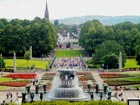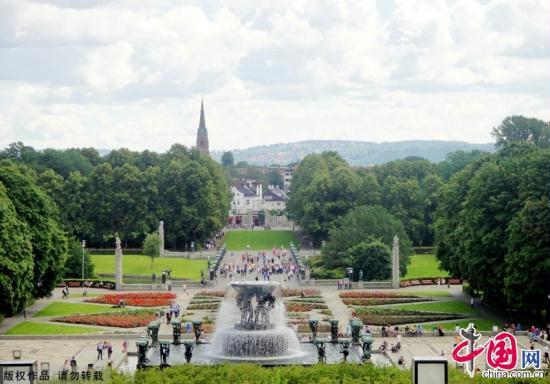| Videos | • Latest |
|
• Feature | • Sports | • Your Videos |
Oslo's sculpture park wows visitors

 0 Comment(s)
0 Comment(s) Print
Print E-mail
CNTV, January 30, 2012
E-mail
CNTV, January 30, 2012
The Norwegian capital is home to one of the world's largest sculpture parks. The 214 sculptures made by a single artist represent different aspects of human relations and they've become one of the most visited tourist attractions in Oslo.
 |
|
Vigeland Park, in the center of Oslo |
Vigeland Park, in the center of Oslo, contains 214 sculptures that includes over 758 figures modelled full scale in clay by the sculptor Gustav Vigeland himself, without the help of an assistant.
The fountain is surrounded by a series of tree sculptures considered to be one of Vigeland's most ingenious concepts. The trees stand in groups and contain human figures representing the relationship between people and Mother Nature. They also portray the passing of time reflected in the different ages of the humans.
Mike Waltson moved to Oslo from Washington D.C in the US twenty years ago. He says he had not heard of sculpture parks until he arrived in Norway.
Mike Waltson said, "I don't think there is anything to match it anywhere because I don't even know of another sculpture park. So yeah, I like it very much."
Vigeland Park's star attraction is a small statue named "Angry Boy". It is not only the most famous statue in the park but also one of Oslo's main tourist landmarks.
Jarle Stromodden, director of Vigeland Museum, said, "I don't think Vigeland expected it to be as popular as it is today because you have to see it as a small part of the whole bridge and the small area below the bridge."
This statue is one of the 58 bronze sculptures of the bridge. They show people of varying ages as Vigeland wanted to represent the different relationships between men and women, as well as between adults and children.
Vigeland, who was born in 1869 and died in 1943, was so talented and prolific that the local city council decided to dedicate him a public area, even when he started to produce his most significant works of art.
The park also houses Vigeland's other masterpiece, a huge granite column which represents the cycle of life, depicting a variety of human conditions and relationships.
This complex sculpture sums up Vigeland's idea behind the entire park, which was a person's journey from birth to death, through joy and sadness.
Vigeland Museum stands at one of the edges of the Park. The building was donated by Oslo City Council to Vigeland and he lived there from 1924 until his death in 1943.






Go to Forum >>0 Comment(s)